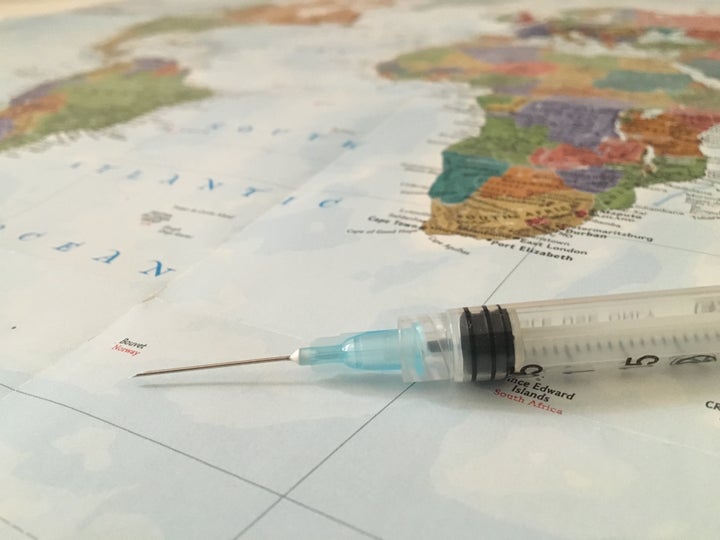
The fact that cervical cancer is a grave public health problem is underscored by its global disease burden—according to the World Health Organization it afflicts 500,000 women a year and kills one woman every two minutes. While the Pap smear has dramatically reduced rates in the developed world, it remains the leading cause of cancer death in low-income countries. Cervical cancer is unique in that it often impacts younger women, which translates to loss of childbearing ability, the devastation of family units, and premature termination of economic productivity. The silver lining is that we understand the cause: cervical cancer results from infection with human papillomavirus, which is the most common sexually transmitted disease in the United States.
Most individuals are able to clear HPV, while in others the infection becomes persistent and may eventually lead to cancer. Thankfully, vaccines afford protection against several viral subtypes with potential to defend against other HPV-induced malignancies such as anal and oropharyngeal cancer. Despite strong recommendation from medical organizations such as the American Academy of Pediatrics, the unfortunate reality is that coverage in America remains dismally low. As of 2014, the U.S. Centers for Disease Control and Prevention reported that approximately 40 percent of girls and 20 percent of boys had completed the recommended series. Compare this with Rwanda, a developing country that has achieved pediatric vaccination rates upwards of 90 percent.
This leads us to question the factors behind our subpar uptake. A recent Washington Post article highlighted lackluster doctor recommendation as the primary hurdle. Prior to assigning blame, however, we must consider the “why” behind such underutilization. Indeed, we mustn’t forget that parental attitudes affect whether or not their children receive preventive care. Interestingly enough, studies reveal that parents are more likely to refuse HPV vaccination in particular. While there are a variety of explanations, one of the most consistent and controversial remains the sexual nature of HPV transmission.
Physician surveys show that parents believe their children are abstinent and hence do not feel that STI protection is warranted. Unfortunately this idealistic strain of thinking has been debunked, as we are well aware that sexual debut tends to occur earlier than parents expect. Squeamish caregivers also express concern that HPV vaccination would encourage promiscuity. This viewpoint is obviously misguided, as studies have disproved any such connection. Clearly, the fact that HPV vaccination triggers such hot button conversation dissuades health care providers from adequately touting its merit or advocating for its use.
This background sets the stage for the important questions on hand: How can we shift the focus of the dialogue away from societal mores and back to one centered around health promotion? How can we avoid an emotionally and politically charged side conversation on sex, given that thousands of women are dying of a preventable disease? To do this, we need to rid ourselves of the unsubstantiated myths, misconceptions, and misinformation about HPV vaccination. In other words, we must completely rebrand the vaccine. If the mere idea of sexual activity distracts us from a commonsense decision regarding lifesaving intervention, then highlighting such tangential information is an inappropriate distraction. We must remove sexual connotation while preserving autonomy of choice so that the decision becomes obvious—protect your child against a deadly cancer.
Cervical cancer continues to wreak global havoc, and the underuse of a promising vaccine is an unfortunate reality that we must work to reverse. To do this we can learn from the success of other public health campaigns, including Hepatitis B vaccination. Despite the fact that this virus is also sexually transmittable, it has enjoyed widespread implementation with a resulting 95 percent decline in pediatric infection rates. This victory was not achieved through disagreements about abstinence or judgments on promiscuity, but rather through logical scientific discourse. It is time to skip the small talk and protect our children from a lethal, yet preventable, cancer.
September is National Immunization Month, and the author is convinced that by engaging every stakeholder, we can eradicate HPV and cervical cancer in our lifetime.